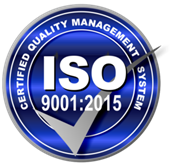
The Importance of EMI Shielding in Medical Devices
EMI shielding is used in many types of medical devices to prevent equipment malfunction or anomaly from electrical, magnetic, or radiofrequency signal interference, and thereby, promote patient safety and reduced healthcare costs.
What is EMI?
EMI stands for electromagnetic interference, which can cause unwanted signal disruption in medical equipment. It can occur when three factors are present:
- An emitting device, which will cause problems with other electronic equipment by creating noise or affecting signals
- The path between them (the coupling) where there’s some sort of electric current flow. For example, metal surfaces combined with wires act like conductors and allow energy from one signal source to travel through them quickly without losing too much power along the way.
- Receptors that receive these emissions into their own systems so they may process what was sent to it originally
How Does EMI Shielding Work?
Since EMI can cause false signals that could potentially harm the patient, EMI shielding, through the use of a protective layer of metal on the medical device, prevents outside electrical, magnetic, or radio frequency interference from disrupting the internal components of that device. This helps ensure accurate readings are obtained during a mechanism’s operation.
There are several advantages to EMI shielding, including preventing signal interference which protects patients, prevents false test results, and saves money by preventing repeated testing and unnecessary equipment repairs.
The consequences of electromagnetic interference can range from minor annoyances to severe injuries or even death. As more people acquire cell phones, the need for EMI shielding increases. Billions of people use mobile phones worldwide, and although these devices act as low-powered transmitters, some may interfere with implantable cardioverter defibrillators (ICDs) and pacemakers.
EMI Shielding in Hospital Environments
Hospitals and medical facilities house a plethora of medical devices that require specific EMI and RFI shielding. These devices include magnetic resonance imaging (MRI), computed tomography (CT or CAT), Electromyography (EMG), and others that rely on shielding to function correctly in their intended environment.
Shielded Medical Enclosure EMI shielding is used in medical devices because EMI Shielding protects internal components while ensuring accurate results are produced. EMI interference caused by outside electrical, magnetic or radiofrequency signals prevents costly medical equipment from performing with reliability while disrupting patient care.
The EMI shielding of today is more challenging than it has ever been before. The use and production of new medical devices and the construction of digital circuits that are smaller yet faster for these newer models make them susceptible to electromagnetic fields and the resulting interference.
EMI Shielding Through Metal Plating
Applying a metal coating is a common technique for shielding electronic devices that reside within a plastic housing. Here are a few examples of metal plating that is commonly used in the medical device industry.
Platinum
Platinum is often used in pacemakers because it resists corrosion. It is highly durable and one of the least reactive metals, and it can withstand wear and tear from water and acid. It is very malleable for applications that require complex, intricate parts. Platinum can also be alloyed with other metals to add additional valuable qualities.
Gold
Gold is commonly used in pacemakers as it is highly resistant to corrosion with high conductivity. It creates an effective EMI shield and doesn’t cause a reaction in the human body.
Copper
Copper is highly conductive and anti-corrosive. Naturally malleable, product engineers spec copper for its versatility. It’s a solid option as it blocks EMI emissions, both reflecting and absorbing any potential interference.
Nickel
Nickel is a prevalent EMI shielding choice for medical devices for several reasons, including its non-corrosive nature and ability to easily alloy with other metals to increase its conductivity. However, consideration should be taken for potential dermatitis concerns for certain devices.
The Future of EMI Shielding in Medical Devices
As our medical innovators continue to create new diagnostic and therapeutic equipment, and business and consumers continue to use more advanced communication devices, it’s inevitable that the odds of EMI causing adverse effects in healthcare situations will increase.
Companies like SAT Plating will continue to serve the needs of product designers seeking new and better options for EMI shielding in medical devices.






